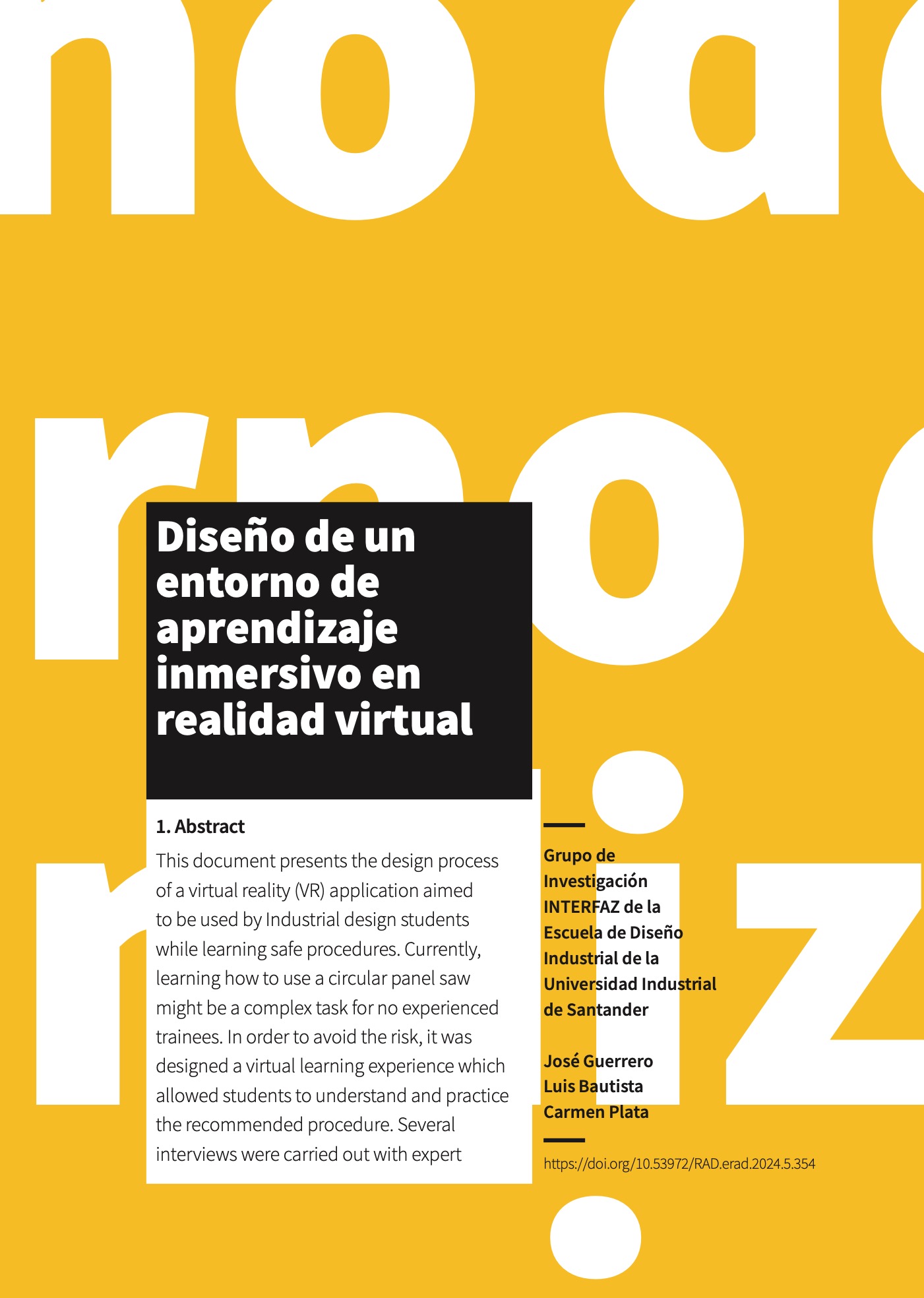Diseño de un entorno de aprendizaje inmersivo en realidad virtual
Contenido principal del artículo
Resumen
This document presents the design process of a virtual reality (VR) application aimed to be used by Industrial design students while learning safe procedures. Currently, learning how to use a circular panel saw might be a complex task for no experienced trainees. In order to avoid the risk, it was designed a virtual learning experience which allowed students to understand and practice the recommended procedure. Several interviews were carried out with expert woodworkers to identify the main tasks that should be included in the instructional design. Cognitive Task Analysis (CTA) and four components instructional design model (4C/ID) were used to build an instructional blueprint which included different complexity levels, supportive information, procedural information and part-task-practice. After many prototyping iterations, the virtual reality application was developed in Unity. Finally, A/B testing was done to compare its learning impact against traditional learning methods.
